| Umělec magazine 2009/2 >> Urbanplay Vienna and Art in Public Space | List of all editions. | ||||||||||||
|
|||||||||||||
Urbanplay Vienna and Art in Public SpaceUmělec magazine 2009/201.02.2009 Ursula Maria Probst | scene | en cs de |
|||||||||||||
|
The urban display offered by the modern western city tends to function as a monitored play-scape, a stage-set for the globalized iconography of capitalism. We can counteract this abrupt “instant urbanism,” one whose urban typology and rapid consumability evince striking parallels with the structure of shopping malls or theme parks, with the situative urbanism of artistic interventions in public space. What kinds of play spaces or open spaces constitute a counterweight to (over)staged and worn-out market economy strategies—”entertainment cities”—that are meant to rationalize away complex cultural processes? This question can be phrased another way: to what extent do artistic interventions, as case studies of thoroughly commercialized urban spaces, actually function as socio-political glue? If we look at Vienna from the perspective of art in the
public space, what we encounter is an urban surface: streets, pedestrian zones, arcades, subway stations, squares, public parks, and storefronts. It is a space that fulfills transit, economic, social, and political functions as well as community interests, and, although openly accessible, it is not openly available. Artistic genres such as public art or Internet art, which adhere to an expanded definition of art, not only provide new avenues of exposure to the delimitation of media or institutional conditions, but also alter our definitions and perceptions of the public space. In their social installation ValYou (2007), artists Susanne Schuda and Florian Schmeiser explore the praxis of marketing firms and their staging of the social as service contract. The title ValYou derives from software designed to optimize database-supported enterprise processes. ValYou is an artistic intervention that takes place both as website and as boxing-ring shaped installation built on sand, intruding into the urban city-space. Actors from the troupe “The English Lovers” were commissioned for performances, engaging passersby along heavily frequented shopping streets in Vienna in conversations that employed the communicative evaluative strategies of commercial firms. Such methods depend upon social, personal contact with potential clients as the first step in assembling a bid for a service contract. During the performance, passersby were asked to step into the boxing ring bathed in spotlight, to be surveyed on how they would rate their social value on a scale of one to ten. The most common result for this self-evaluation tended to be around two on the value scale, based on social criteria. In its staging of the social, ValYou functions as social sculpture in the public space, satirizing marketable corporate strategies based on emotional and social stimuli. Rather than systems of social value, the project G. S. A. - Vienna Security Days (2008) interrogates the security economy. Developed to coincide with World Security Days as a partnership between Global Security Alliance and KÖR (Kunst im öffentlichen Raum, or Art in Public Space), the security policy intervention G.S.A. – Vienna Security Days asked the rhetorical question: “Are you secure?” (“Sind Sie sicher?”) “Kunst gegen Terror” (“Art against Terror”) is not only a response to systems of political surveillance and menacing paranoid phantasms; it also responds to the new security economy that artistic strategies are already exploiting. A series of psycho-geographic interventions were planned as politically symbolic punctuation: fleets of black helicopter shadows were to be spray-painted on sidewalks throughout the city, and were meant to be visible from space via Google Earth. The project could not be realized: approval for this artistic intervention was denied by the authorities, on the grounds that it would constitute too great a security risk. To coincide with the project, Konrad Becker, an artist and activist from Public Netbase, organized the panel, G. S. A. Forum: the New Security Culture, where the need for a conceptual clarification of cultural security policy and an appraisal of subjective security was discussed. The Russian media theorist Lev Manovich has called the reality space that surrounds us, one increasingly charged and permeated with digital information, as “augmented space.” Mobile communication devices allow us to exist simultaneously in both the real world and in digital data space. This is where shifts in our cognitive and social structures and habits enter the picture. How do these technologies, which allow us to log on to the datastream at almost any time or any place, alter our perception of such spaces and of our own behavior? This question is pursued by the artist Johannes Vogl in his intervention Funkloch (Dead Zone, 2009), in which he tries undo this fact. A man-made “dead zone” with a diameter of 30 meters was created using a mobile radio jammer that blocked radio waves of all kinds, creating a kind of “white noise.” A debate over ownership of the public space followed, which moved this installation into a legal gray zone. Artistic actions and interventions in the urban space make for new audiences, which then can critically interrogate the political sovereignty of a democratic glossary of values infiltrated by neoliberal economies. A plethora of interest groups—cultural, social, political, each with its own demands on the use of urban space—makes for potential conflict. Basic rights such as freedom of expression, use of public space, areas for posturing on behalf of various cultural initiatives are all being forced into illegality by the tendency toward commercial monopolization. The suspension of civil rights, the decrease in individual freedoms, and the sharpening dialectic between justice and life are symptoms of a state of emergency that the Italian philosopher Giorgio Agamben has diagnosed as the permanent condition of our political affairs, and which he has characterized as a feature of the globalization of neoliberalism. Vienna in the 1990s underwent a process described by Graeme Evans in his “Cultural Planning: An Urban Renaissance?” (2001): a boom in the concept of culture as image factor. Museums more than ever serve as flagships for tourism, and biennials expand cluster-like into the public space —to say nothing of the growing competitiveness among European cultural capitals, with their increasing interest in programs and projects that take place in the urban outdoors. Projects of such ambition not only tend toward the promotion of urban space as cultural showcase, hence playing a role in the structural procedures of urban renewal, but also produce an urban branding that is useful both culturally and political-economically. Vienna’s profile as venue for festivals is increasingly prominent, as the program schedule of the highly subsidized Wiener Festwochen “Into the City” shows. Over the years innovative art projects, such as Soho in Ottakring, have emerged along the urban periphery and in the public space, and in 2009 their permanent structures were temporarily put to use by the festival, for advertising purposes, relying on hip counterculture and immigrant-community musical genres. The rhetoric of transnational everyday life in the multicultural city, exploited once again by the publi- city machine, nevertheless ignores the fact that within the city’s sociographies such a mixture of nationalities and ethnicities is still out of sync with the socio-political or city planning response. There are cultural practices that test the bounds of the play space of tolerance and acceptance as they are lived. The danger that public space will be treated as a readymade, which is currently being partially realized by city planners and architects with joint projects around the redesigned Nordbahnhof on the Wiener Praterstern, is being counteracted by Kunst im öffentlichen Raum (art in open space), so that the public square might be understood not as “tableau” but rather as zone of activity or contact area for urban architecture and urban design. The art and music club Fluc, on the Wiener Praterstern, is one example: operated by the artists Martin Wagner, Joachim and Sabine Bock, the Fluc and the Fluc_Wanne consist of an L-shaped container ensemble that has been transformed into a concert and dance floor flanking the outlet of a pedestrian walkway, serving as a venue for art, performance, sound, and club production. Dubbed by its architect Klaus Stattmann as “parcour accidental,” the Fluc has turned against the trend toward over-organized social engineering that has increasingly concentrated on the monitoring of the urban. All these permanent encroachments, spatial interventions, expansions, and extensions across the terminal square that runs from the front of the Fluc containers to the Wiener Nordbahnhof (itself recently revitalized in the manner of a shopping mall), or the artwork on the outer facades in the public space, constitute everyday praxis in Fluc. Female Obsession’s art action, the aluminum-foil textual installation Exzess. Six Seconds To Read This Sentence (2006), which ran along the glass façade of Fluc, interrogated such moments of perambulation. An exhibit called “Local Strategies - Urban Signs” (2008), which took place on the square in front of the Fluc, with installations and sound interventions from David Moises, Michael Gumhold, Anna Artaker, Lucie Stahl, Stefan Sandner, Boris Ondreicka, or Christian Egger, took this position against the city as space for punctuation or typesetting. Sonia Leimer’s Ohne Titel (Untitled, 2008) served as a temporary installation at the interface between language and architecture, seizing the opportunity for direct communication. The typeface of her textual installation BETON, STAHL, GLAS, mounted in front of the Nordbahnhof on the Wiener Praterstern, borrowed the look of rental advertising signage, offering, tautologically, a subtle riposte to it. Kunst im öffentlichen Raum has been a central hub in Vienna since 2004, subsidizing projects in the public space, and sponsoring international artists such as Ken Lum and Joep van Lishout and projects such as Wellness Skull (2008). This program has been realized through an underwriting scheme that gathers allocations from a number of community departments (culture, housing, and urban planning) and apportions them not to structured projects that have been earmarked as “Kunst am Bau” (Art Under Construction), but to independent projects in the urban space. This union of urban renewal and temporary intervention is the driving force behind a number of projects currently being realized in Vienna. Developments in city planning and urbanographies can be co-designed even in their planning stages, and a creative artistic instrument for perceiving the city as a mesh of relationships between different experiential spaces can be co-produced. Kunst im öffentlichen Raum interventions necessarily respond differently to functional and content-related questions, local conditions, or historical connections and displacements than does art in the institutional space. Kunst im öffentlichen Raum projects uncover confrontations, and challenge the very notion of democracy, as the “Big Art Mob” project in Great Britain has shown. In “Big Art Mob” Britons are called upon to compile a map of art in the public space and to decide for themselves what art actually is. This concept of art as the construction of a sensorium of exceptions, as the prominent French philosopher Jacques Rancière has defined as the experience of aesthetics, can scarcely find a more adequate field of activity than in the public space. This results in a sense experience, derived from the aesthetic, that distinguishes itself from other sense experiences by being subject neither to categories of perception nor desire or fetishization. According to Rancière, art proves resistant to the temptations of objects of consumption. Temporary or performative art in the public space comes as close as possible to the resistance that Rancière has called for. The subversive actions of the artist Leopold Kessler have precipitated a situational urbanism that can be traced back to the Situationists around Guy Debord in the 1950s. Kessler’s guerilla strategies sometimes involve tapping into power lines or public infrastructures, reminiscent of the exploitation of international rail for cigarette smuggling. Kessler’s projects simultaneously explore the topography of the city, ranging from traffic routes that shape urban life to patterns of behavior and the responses they elicit. Public squares, routes, street signs, or barriers are the main targets of Kessler’s interventions. He exploits gaps in the system to stage events that take on the profile of officially sanctioned or permitted construction activities; these require Kessler to dress up in a public works employee’s uniform with an oversized ticket punch to perforate street signs. One such perforation performance Perforation Kal. 10 mm (2007) took place as a response the FPÖ’s xenophobic poster campaign “Wien darf nicht Chicago werden.” Parallels to the bullet-riddled street signs found on the outskirts of numberless big cities are self-evident. One of the most interesting aspects of this art in public space is that such a project need not be unconditionally understood as artwork. For those who notice the event, seeing it not as intended, but recognizing it as artwork, this can be read as one miniscule disruption at the margins of the system. The Autonomous Acts project, curated by Michael Scott Hall, provides the framework for a four-part performance sequence that likewise attempts to redefine everyday perceptions of reality and aesthetic experiential data. In Camouflage on a Mannequin (2008), a project co-produced by John Miller and Richard Hoeck, male and female mannequins in military garb were engaged in a dialogue. During the course of the project the mannequins changed outfits and positions, so that the setting itself fell into formation, and a paradoxical narrative structure distinct from the other display windows resulted. It is the regulation or commercialization of public space that the artist Christian Eisenberger confronts with a nonviolent discourse regarding public space as a conflict zone between economic and individual interests. Eisenberger simultaneously decouples art from its meaning and function of art through its quotidian habits. His staffage figures are either taken away by collectors or by garbage disposal. Eisenberger’s commitment to “poor” materials recalls arte povera, the subversiveness of temporary cardboard boxes as illegal street art proves to be deeply political. Such projects play a part not only in the construction of urbanographies, but also serve, as the French philosopher Michel de Certeau has articulated, as the foundations of urban and municipal trade as well as a psychograph of the city. Current publications, such as Chrstiane Feuerstein and Angelika Fitz’ “Wann begann temporär?” (When Did Temporary Start?, 2008) provide an interesting appendix to the history of early urban interventions.
01.02.2009
Recommended articles
|
|||||||||||||
|
04.02.2020 10:17
Letošní 50. ročník Art Basel přilákal celkem 93 000 návštěvníků a sběratelů z 80 zemí světa. 290 prémiových galerií představilo umělecká díla od počátku 20. století až po současnost. Hlavní sektor přehlídky, tradičně v prvním patře výstavního prostoru, představil 232 předních galerií z celého světa nabízející umění nejvyšší kvality. Veletrh ukázal vzestupný trend prodeje prostřednictvím galerií jak soukromým sbírkám, tak i institucím. Kromě hlavního veletrhu stály za návštěvu i ty přidružené: Volta, Liste a Photo Basel, k tomu doprovodné programy a výstavy v místních institucích, které kvalitou daleko přesahují hranice města tj. Kunsthalle Basel, Kunstmuseum, Tinguely muzeum nebo Fondation Beyeler.
|







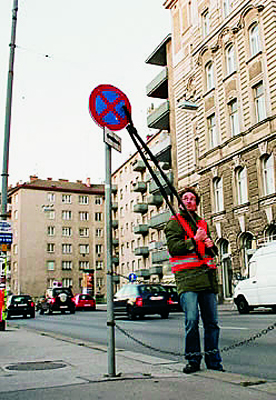




















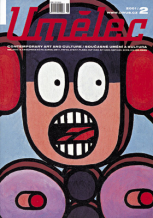
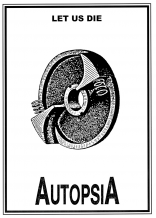
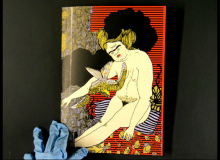
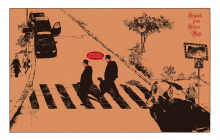


 New book by I.M.Jirous in English at our online bookshop.
New book by I.M.Jirous in English at our online bookshop.
Comments
There are currently no comments.Add new comment